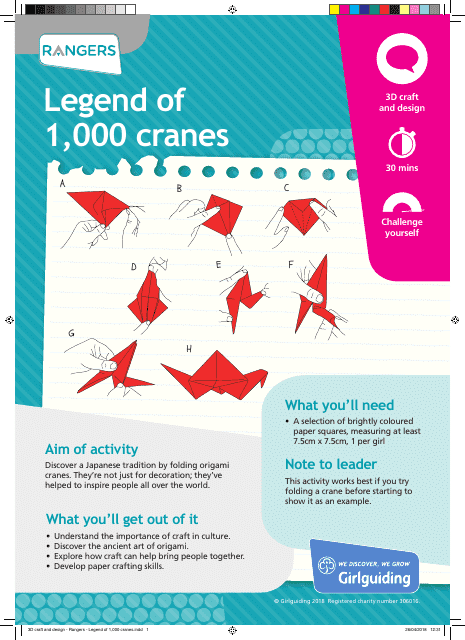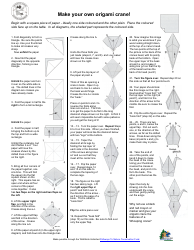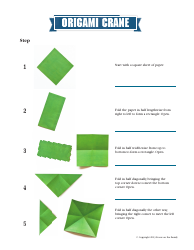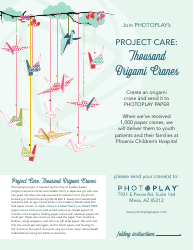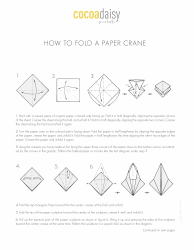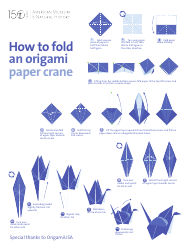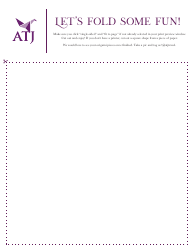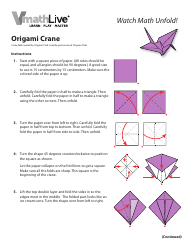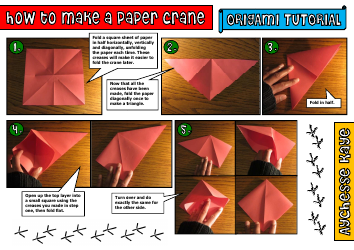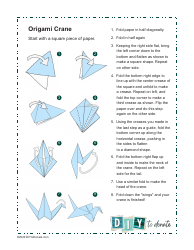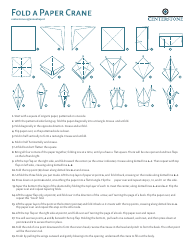Origami Crane Guide
The Origami Crane Guide is for assisting individuals in the traditional Japanese art of paper folding, specifically in creating a design known as the Crane. This is a common and popular design in Origami symbolizing longevity and happiness. The guide includes step-by-step instructions on how to fold an origami paper into a crane, which can be a fun, creative, and meditative activity. It is also associated with a peace movement due to the story of Sadako Sasaki, a young Japanese girl who attempted to fold 1000 cranes to wish for world peace and recovery from her illness caused by the atomic bombing of Hiroshima during World War II.
The Origami Crane Guide is not a document that is typically filed by any specific country or organization. Rather, it is a set of instructions that can be shared by anyone -- from individuals to arts and crafts websites, hobby clubs, educational institutions, and cultural organizations. These guides are generally created to help people learn how to make a traditional Japanese origami crane.
FAQ
Q: What is the origami crane?
A: The origami crane is a traditional Japanese paper folding art. It's a representation of the Japanese red-crowned crane that's considered a mystical or holy creature in Japan's culture. Origami cranes have become a symbol of hope and healing during challenging times.
Q: What does the origami crane symbolize in Japan?
A: In Japan, the crane is seen as a symbol of good fortune and longevity. Additionally, parents often give a thousand origami cranes to their child on their first birthday to wish them a long, prosperous life. This tradition has extended to include personal desires for peace, health, and good luck.
Q: How do you make an origami crane?
A: To make an origami crane, you need a square piece of paper. You start by folding the paper diagonally to create triangles then you fold it into a smaller square, known as the 'base'. The rest of the process involves a series of intricate folds that eventually form the beak, wings, and tail of the crane.
Q: What is the significance of 1000 origami cranes?
A: In Japanese culture, folding 1000 origami cranes is believed to make a person's wish come true. This tradition, also known as 'senbazuru', is practiced for various occasions like weddings, where the couple would make a wish for a happy and prosperous marriage.
Q: What is the story of Sadako and the Thousand Origami Cranes?
A: Sadako Sasaki was a Japanese girl who became a symbol of peace after the atomic bombing of Hiroshima. While in the hospital battling leukemia from radiation, she began folding a thousand origami cranes in hopes of being granted a wish, as per Japanese tradition. Sadako passed away before she could finish, but her classmates completed the task in her memory. Her story sparked global peace initiatives and annual peace celebrations in Hiroshima.
Q: What type of paper do you need for origami crane?
A: Although you can technically use any piece of square paper for origami, traditional origami paper, called 'kami', is the best for folding cranes. Kami is lightweight, easy to fold, and often comes in vibrant colors.
Q: What is the cultural impact of origami cranes?
A: Origami cranes have a huge cultural impact, particularly in Japan. They've become global symbols of peace, hope, and healing. They're often used in ceremonies, given as gifts, and used in memorial services. Additionally, origami cranes are commonly used in art therapy, mindfulness practices, and school projects.
